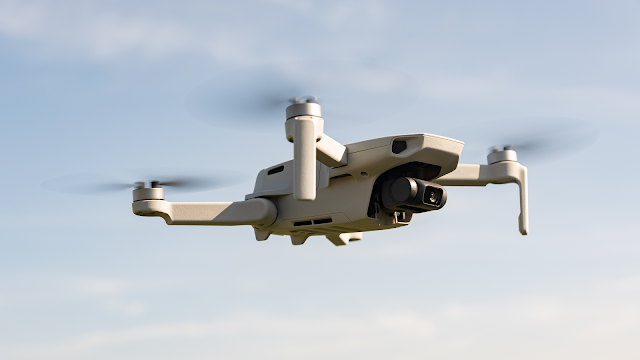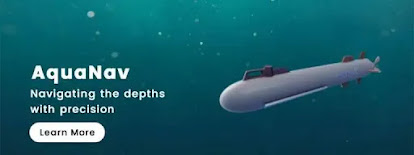Aerostatic Drones: Revolutionizing Underwater Navigation Systems
Introduction
The exploration of
underwater environments has always presented significant challenges due to the
vastness, depth, and complexity of the oceans. Traditional underwater
navigation systems, while effective, often face limitations in communication,
positioning accuracy, and operational range. In recent years, the integration
of aerostatic drones—such as
tethered balloons and airships—has emerged as a transformative approach to
enhance underwater navigation capabilities. These drones offer a stable
platform for aerial surveillance, real-time data transmission, and extended
communication reach, providing critical support for submerged operations. By
hovering persistently over targeted areas, aerostatic drones enhance the
efficiency and accuracy of underwater vehicles, including Remotely Operated
Vehicles (ROVs) and Autonomous Underwater Vehicles (AUVs).
This article delves into the
role of aerostatic drones in revolutionizing underwater navigation systems,
exploring their applications, advantages, technological innovations, and future
prospects.
The Emergence of Aerostatic Drones in
Maritime Exploration
Aerostatic drones,
characterized by their buoyant lift using lighter-than-air gases, have
traditionally been employed in various aerial applications, including
surveillance, communication relays, and environmental monitoring. Their ability
to hover steadily over specific locations for extended periods makes them ideal
candidates for supporting underwater missions. Unlike other aerial platforms
such as satellites or conventional drones, aerostatic drones offer persistent,
localized coverage with minimal energy expenditure.
By serving as stable aerial
platforms, aerostatic drones can facilitate real-time data transmission,
enhance positioning accuracy, and extend the operational range of underwater
vehicles. These attributes make them particularly valuable in deep-sea
exploration, military reconnaissance, marine research, and offshore resource
management.
Improving Positioning and Navigation
Accuracy
Accurate positioning is
vital for the success of underwater missions, especially in tasks such as
seabed mapping, resource exploration, and environmental monitoring. Traditional
GPS signals do not penetrate water, making it challenging to determine the
precise location of underwater vehicles. Existing solutions, such as inertial
navigation systems (INS) and long-baseline (LBL) acoustic positioning, often
require calibration and can introduce errors over extended operations.
Aerostatic drones can
mitigate these issues by providing a reference point for positioning systems.
By integrating GPS modules and inertial measurement units (IMUs), these drones
can maintain their exact location above the water surface. Underwater vehicles
can then use acoustic signals to triangulate their position relative to the
drone, significantly enhancing navigation accuracy.
Furthermore, aerostatic
drones can deploy additional sensors, such as LiDAR and sonar, to complement
existing underwater navigation technologies. This multi-layered approach
improves the precision and reliability of navigation in complex marine
environments, including areas with strong currents or varying seafloor
topographies.
Extending Operational Range and Endurance
The endurance of underwater
vehicles is often limited by battery life and the need for frequent resurfacing
to establish communication or recalibrate positioning systems. Aerostatic
drones offer a solution by providing continuous support without the need for resurfacing.
Their ability to remain airborne for extended periods allows them to serve as
persistent communication hubs and navigation aids, enabling underwater vehicles
to operate more efficiently and focus on mission objectives without
interruptions.
By incorporating renewable
energy sources, such as solar panels or hydrogen fuel cells, aerostatic drones
can maintain operations for weeks or even months, making them highly
cost-effective for long-term missions. This capability is especially valuable
for large-scale oceanographic surveys, underwater archaeology, and offshore
industrial activities.
Technological Innovations and Integration
The integration of
aerostatic drones into underwater navigation systems has been facilitated by
several technological advancements:
- Advanced
Materials and Design: The
development of lightweight, durable materials has led to the creation of
aerostatic drones capable of withstanding harsh maritime environments.
Innovations in design have improved their stability and payload capacity,
allowing them to carry sophisticated communication and navigation
equipment.
- Autonomous
Operations:
Incorporating artificial intelligence (AI) and machine learning algorithms
enables aerostatic drones to operate autonomously, adjusting their position
in response to environmental changes and mission requirements. This
autonomy reduces the need for constant human intervention and enhances the
efficiency of underwater navigation systems.
- Energy
Efficiency:
Advancements in renewable energy sources, such as solar panels, have been
integrated into aerostatic drones, extending their operational endurance.
This energy efficiency is crucial for long-duration missions in remote
ocean regions.
Case Studies and Applications
Several real-world
applications and case studies highlight the effectiveness of aerostatic drones
in enhancing underwater navigation systems:
- Environmental
Monitoring:
Aerostatic drones have been deployed to monitor coral reef health, track
marine wildlife, and assess the impact of climate change on ocean
ecosystems. Their ability to provide continuous data transmission has
proven invaluable for long-term environmental studies.
- Oil
and Gas Exploration: In
the oil and gas industry, aerostatic drones support underwater inspections
of pipelines and rigs. By providing precise positioning and real-time
communication, they enhance the safety and efficiency of exploration and
maintenance operations.
- Search
and Rescue Operations:
Aerostatic drones have been utilized in search and rescue missions to locate
submerged objects or missing vessels. Their extended endurance and
real-time data capabilities enable swift response and coordination during
emergencies.
Challenges and Future Prospects
While aerostatic drones
offer significant advantages, several challenges need to be addressed to fully
realize their potential in underwater navigation systems:
- Regulatory
Considerations: The
operation of aerostatic drones in maritime environments requires
compliance with aviation and maritime regulations. Developing standardized
guidelines is essential to ensure safe and coordinated operations.
- Environmental
Factors: Adverse
weather conditions, such as strong winds and storms, can affect the
stability and functionality of aerostatic drones. Enhancing their
resilience to environmental factors is crucial for reliable performance.
- Technological
Integration: Seamless
integration between aerostatic drones and underwater vehicles necessitates
compatibility in communication protocols and data formats. Collaborative
efforts between manufacturers and researchers are vital to achieve
interoperability.
The future of aerostatic
drones in underwater navigation systems is promising. Ongoing research and
development efforts aim to enhance their capabilities, reduce operational
costs, and expand their applications. As technology advances, aerostatic drones
are poised to become integral components of maritime exploration, contributing
to a deeper understanding of our oceans.
Conclusion
Aerostatic drones represent
a significant advancement in underwater navigation systems, offering solutions to longstanding challenges in
communication, positioning, and operational endurance. Their integration into
maritime exploration endeavors has the potential to revolutionize how we
explore and understand underwater environments. By providing stable, persistent
aerial platforms, aerostatic drones enhance the capabilities of underwater
vehicles, leading to more efficient and effective missions. As technological
innovations continue to emerge, the role of aerostatic drones in underwater
navigation is set to expand, ushering in a new era of ocean exploration.


.png)

Comments
Post a Comment